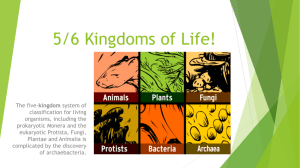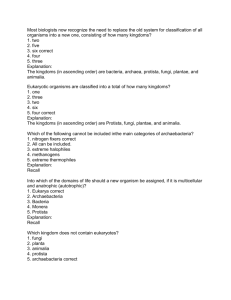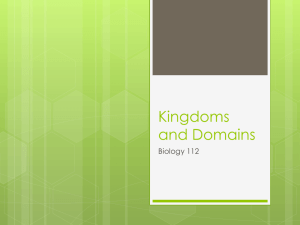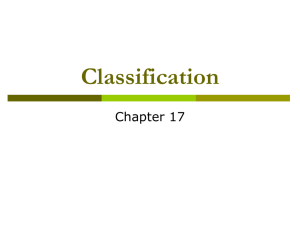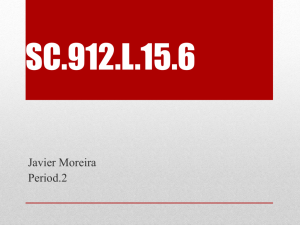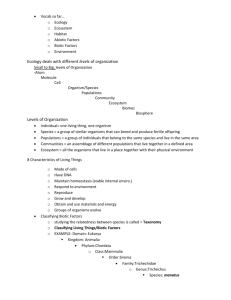Chapter 17: Classification
advertisement
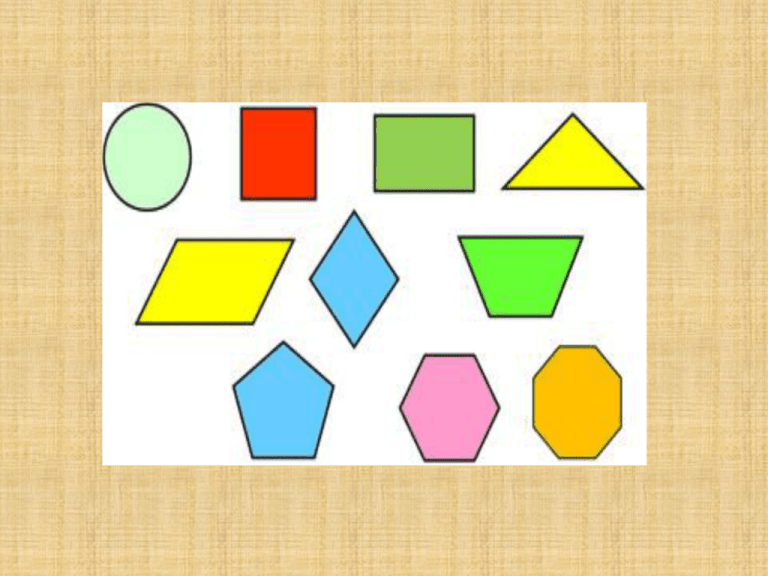
Grouping bags that carry your books 1. 2. 3. 4. Determine a common name for all the bags that carry your books Divide your bags into 2 – 3 groups based on a common characteristic for each group Divide each group from #2 into 2-3 groups depending on their common characteristics & move them Continue to do this 4 more times, getting more specific each time. 5. Once you get to an end point where you can no longer divide them up, start giving them two part names (Purpleus bistrapus) Taxonomy 1. 2. 3. 4. 5. Determine Kingdom a common name for all the bags that carry your books Divide your bags into 2 – 3 groups based on a Phylum common characteristic for each group Class each group from #2 into 2-3 groups Divide depending on their common characteristics & move them Continue to do this 4 more times, getting more Order specific Family each time. Once you get to annames end point where you can no Genus & species longer divide them up, start giving them two part names (Purpleus bistrapus) Chapter 17: Classification What does it mean to classify? • Could you imagine your closet or your drawers in your room not being organized? • What if you just threw the kitchen utensils into a drawer? • Puts order into a system or group • Give some examples from your life where you have formed a classification system to make your life easier Taxonomy • Field of biology that names and groups organisms according to their characteristics and evolutionary history Classification systems • 1st system – Aristotle’s grouped plants and animals by land, sea and air. • Modern system - Carolus Linnaeus (1707 – 1778) Section 17.1 Objectives • Relate biodiversity to classification • Explain why naturalists replaced Arisotle’s system of classification • What method did Linnaeus use to classify? • List Linnaean levels of classification • Modern system is based on morphological similarities. • Hierarchy of eight groups (Taxa) – – – – – – – – Domain – New taxon. Eukarya Kingdom – largest most inclusive grouping- Animalia Phylum (Division in plants)- Chordata Class - Mammalia Order - Primate Family - Hominidae Genus - Homo species – most exclusive, specific group. Members of this grouping can mate and produce viable offspring - sapiens – varieties – same species but with slight differences – subspecies – same species, different location Some past systems Linnaeus 1735 2 kingdoms Haeckel 1866 3 kingdoms Chatton 1937 2 Copeland 1956 4 empires kingdoms Whittaker Woese et al. [8] 1969 1977 5 6 kingdoms kingdoms Woese et al. [9] 1990 3 domains (not treated) Protista Prokaryota Plantae Vegetabilia Animalia Monera Eubacteria Bacteria Archaebacteria Archaea Protista Protista Eukarya Fungi Fungi Plantae Plantae Plantae Animalia Animalia Animalia Protista Plantae Animalia Monera What’s in a name? • Binomial nomenclature – each species in given a two part name • Genus name – Homo or Homo • species name – species identifier – usually descriptive - sapiens or sapiens • **Latin is the language of classification – universal and does not evolve (Dead language) Section 17.2 Objectives • What evidence do modern biologists use to classify organisms? • What kind of information is presented in a phylogenetic diagram? • How is a cladogram made? • Explain how biomolecules can be used to classify organisms Today, we use Phylogeny (based on evolutionary history) for classification • Systematics – organizes living things in the context of evolution • Phylogenetic tree – family tree that shows evolutionary relationships. – Use morphology and embryological development. – Look at early development. • Zygote (1 cell) to morula(solid ball of cells), to blastula (hollow ball stage) with the blastopore (indentation of gastrula) becoming the anterior end of the digestive tract in most animals. In echinoderms (sea stars) and chordates (that’s us), it is the posterior end. So we are more closely related to the echinoderms than the Arthropods (Insects and crustaceans) Blastopore Zygote Morula Blastula Also used: • Fossil record • Macromolecules – comparison of DNA and proteins. More proteins in common, more recently two species shared a common ancestor. – “Molecular clock” model compares amino acids in a protein sequence. Ie. Our Hemoglobin and a gorilla’s is only 1 amino acid off in a chain of 146 amino acids. • Chromosomes – More similar the karyotypes, the more similar the organisms Cladistics • Named for branches of trees called clades • Uses certain features (derived characters) to show evolutionary relationships • Derived characteristics – unique feature to a group (feathers in birds) • Cladistics, ignores when and where a branch occurs, using only derived characters to define each branch point by a fundamental character of evolutionary significance. • Cladogram is a useful way of organizing, in a visual way, the relationships between creatures that share and do not share derived characters. • Construction begins with data; a table of traits or characteristics that have evolved or been derived by the evolutionary process. Derived Characters segmented jaws hair placenta multicellular li m bs kangaroo + + + - + + earthworm + - - - + - amoeba - - - - - - lizard + + - - + + cat + + + + + + sponge salmon + + - - + + - Amoeba Sponge Earthworm Salmon Lizard Kangaroo Cat Placenta Hair Limbs Jaws Segmented Multicellular Fish Amphibians Reptiles Birds Monotreme mammals Marsupial mammals Warmblooded Hair Amniotic egg Lungs Placental mammals Placenta Early Internal development Section 18.3 Objectives • What evidence led to the development of the 3 Domain system? • What characteristics are used to differentiate between the domains? • Describe the 6 Kingdom system and its characteristics • What are some problems with the 6 Kingdom system? • Explain why taxonomic systems are dynamic The New and Improved Six Kingdom System Kingdom Cell Type # of Cells Nutrition Representative organism Archaebacteria Prokaryotic Unicellular Autotrophic or Heterotrophic Blue-green bacteria, Methanogens Eubacteria Protista Fungi Plantae Animalia Prokaryotic Unicellular Autotrophic or Heterotrophic E.coli, Staphylococcus, Streptococcus, Spirochetes Eukaryotic Uni, multi or colonial Autotrophic or Heterotrophic Amoeba, Paramecium, Euglena, Plasmodium, Diatoms Heterotrophic Yeast, Mushrooms, Molds, smuts, rusts Eukaryotic Eukaryotic Eukaryotic Uni or Multicellular Multicellular Multicellular Autotrophic (some heterotrophic) Mosses, ferns, Horsetails, Conifers, Flowering plants Heterotrophic Sponges, Coral, Sea stars, EW, Insects, Fish, Amphibians, Reptiles, Birds, Mammals Archaebacteria • Many live in harsh environments (extremophiles) • – Archae – Ancient • Asexually reproduces by binary fission Eubacteria • Eu – true • Most of the bacteria belong here • Asexually reproduces by binary fission Protista • Pro – first • Plant-like, Animal-like and Fungus-like characteristics. • Least clear cut of all kingdoms. • Asexually by binary fission & segmentation Fungi • Absorptive heterotrophs. • Cell walls made of chitin. • Reproduces sexually and asexually Plantae • • • • Multicellular photosynthetic organisms a cell wall made of cellulose Reproduces asexually and sexually Animalia • Multicellular • ingestive heterotrophs. • Reproduces asexually and sexually Three - Domain System • Woese compared rRNA to show that living things can be grouped into 3 groups/domains • The domains: Bacteria (Eubacteria) Archaea (Archaebacteria) Eukarya (Everything else) Human Classification: • • • • • • • • Domain Kingdom – Phylum – Class – Order – Family – Genus – species – Eukarya Animalia Chordata Mammalia Primate Hominidae Homo sapiens Dichotomous key • Uses a branching system of two features to separate steps. Helps in identification process • 1A. With hair Mammal • B. Without hair Go to 2 • 2A. Has scales • B. Does not have scales Go to 3 Go to 4 • 3A. Has a three chambered heart • B. Has a two chambered heart Reptiles Fish • 4A. Has feathers • B. Does not have feathers Birds Amphibians Dichotomous Key Is a method for determining the identity of something by going through a series of choices that leads the user to the correct name of the organism. Dichotomous means "divided in two parts". At each step of the process of using the key, the user is given two choices; each alternative leads to another question until the item is identified 1a. Wings covered by an exoskeleton…..... Go to 2 b. Wings not covered by an exoskeleton …Go to 3 2a. b. Body has a round shape………….......Ladybug Body has an elongated shape.......Grasshopper 3a. b. Wings fold against body......................Housefly Wings point out from sides……..…….Dragonfly 1 2 3 5 7 4 6 8 9 10

